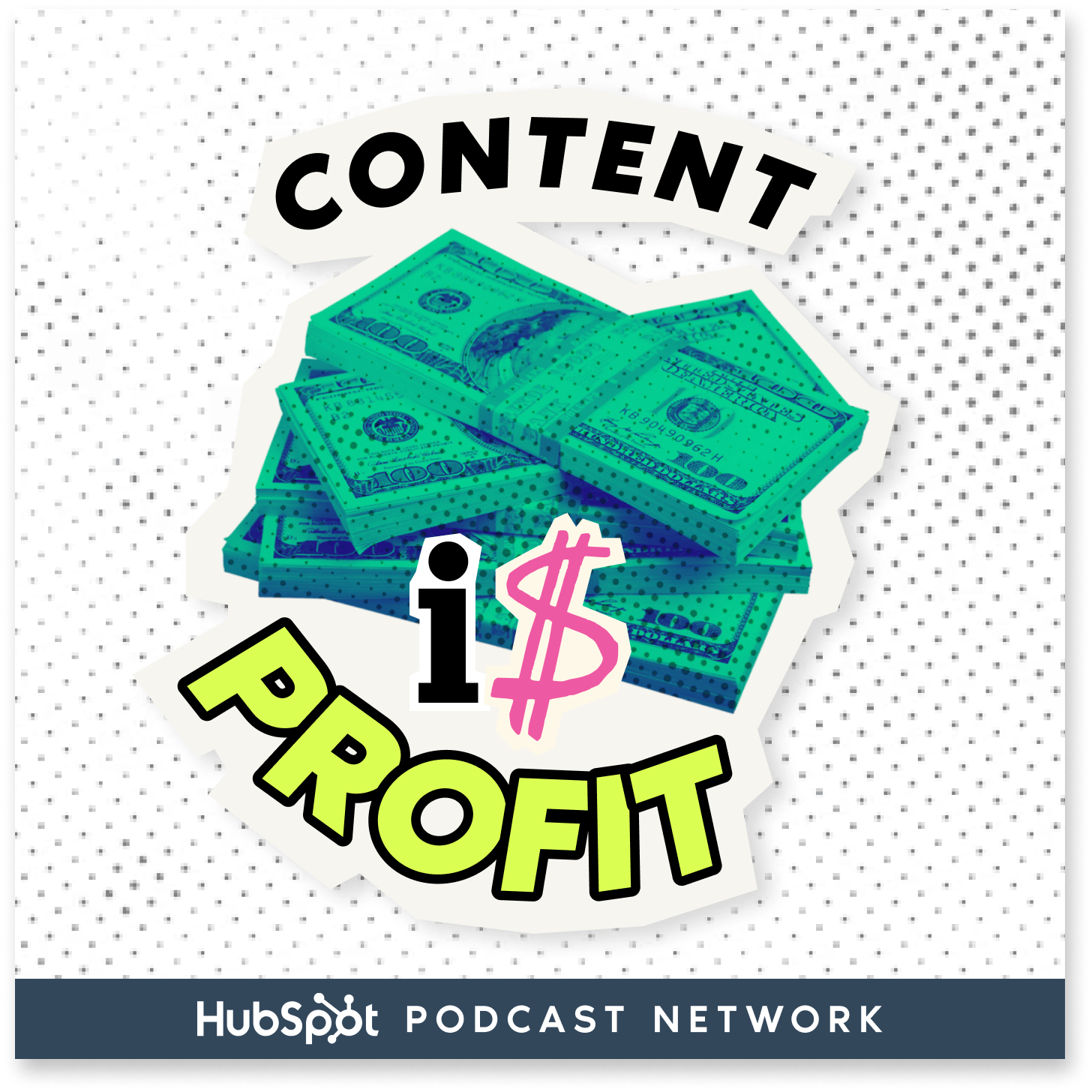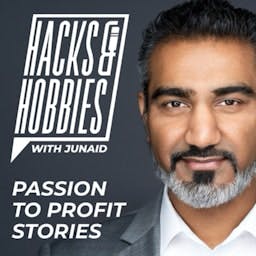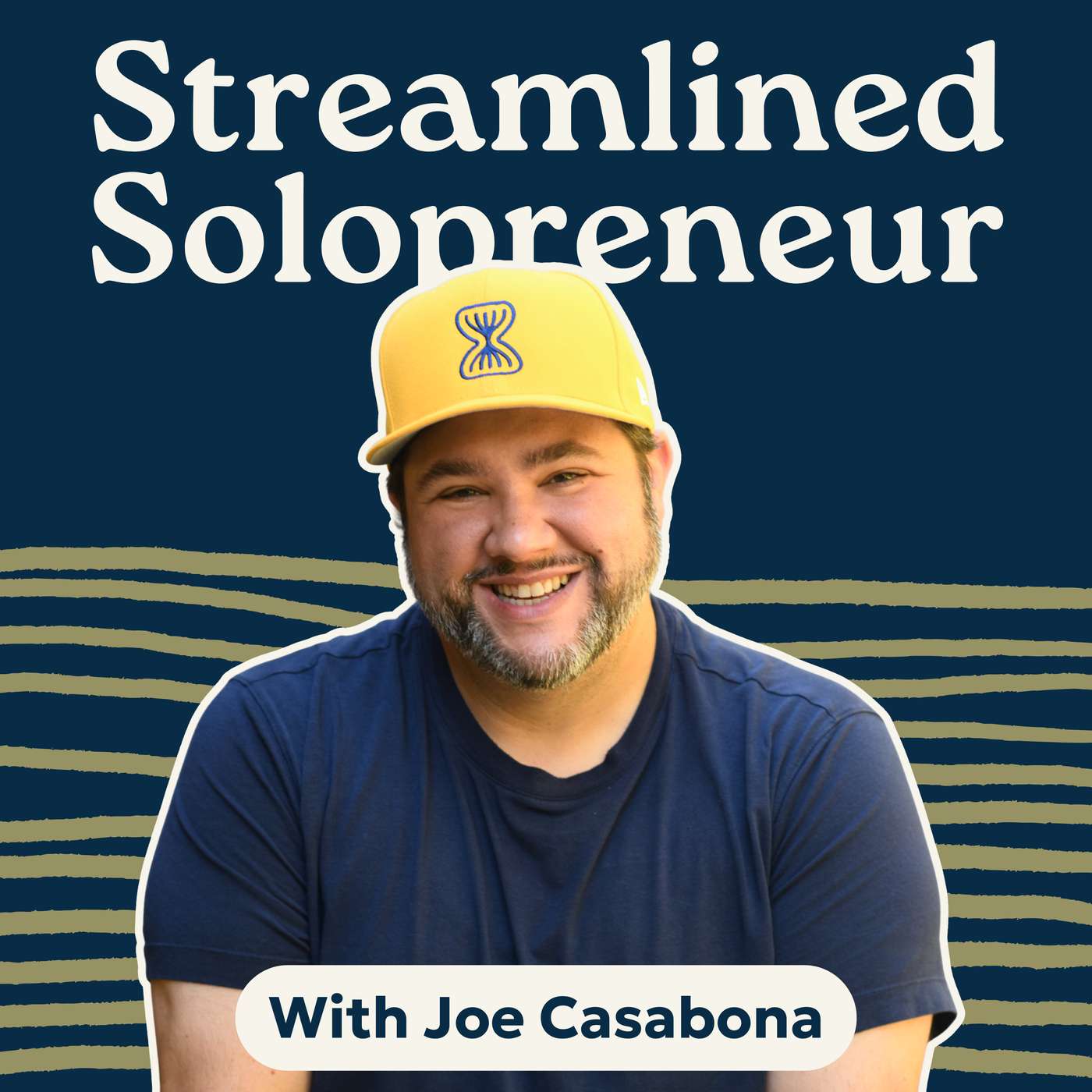
Podcasting Made Simple
Podcasting Made Simple is the premier podcast about podcasting! We’re here to help podcast guests and podcast hosts reach more listeners and grow their income so they can change more lives! Join Alex Sanfilippo and other podcasting industry experts as they share how you can level up on either side of the mic! (Show notes and resources: https://PodMatch.com/episodes)
Podcasting Made Simple
The Art of Relatable Storytelling on Podcasts | Kieron James
Every podcast guest is told that they need to speak in story form. The framework for storytelling is no secret at this point. However, good storytelling, and even powerful stories, do not move an audience. To truly resonate, the story must be relatable. In this episode, Kieron James shares the strategy for positioning your stories in a way that listeners will find them relatable. Get ready to engage listeners on a new level and compel them to take action!
MORE FROM THIS EPISODE: HTTPS://PODMATCH.COM/EP/309
Chapters
00:00 The Power of Storytelling in Podcasting
02:54 Crafting Relatable Narratives
05:46 Dynamic Storytelling Techniques
09:03 The Importance of Change and Fallibility
11:57 Connecting Through Human Experience
Takeaways
Storytelling is essential for connection in podcasting.
Humans are naturally wired to respond to stories.
Effective stories are specific and relatable.
Using movement in storytelling adds dynamism.
Change is a crucial element in engaging narratives.
Fallibility makes stories more relatable and human.
Creating a scene helps listeners visualize the story.
Empathy is maximized through shared human experiences.
Crisis, struggle, and resolution form the backbone of compelling stories.
Listeners connect more deeply when they feel something.
MORE FROM THIS EPISODE: HTTPS://PODMATCH.COM/EP/309
You're listening to Podcasting Made Simple. was almost 10 years ago on a peaceful summer morning that my son Daniel jumped out of an aeroplane. Now, given that he was 17 at the time and not a member of the parachute regiment, you'd be forgiven for thinking that that will be the thing I'd remember most about that particular day. But you'd be wrong, because what I recall even more clearly was what happened that evening. We were all just about to tuck into a delicious Chinese takeaway when we heard Dan stomping down the stairs. and was clearly furious. Because that morning he'd conquered his nerves in a sponsored parachute jump. And now he'd discovered that a hefty chunk of the money he'd raised wouldn't be reaching the charity at all. We all sensed his frustration and the whole family wanted to help him put this right. It was as if Dan had tossed a pebble into the pond and the ripples would be felt for a decade. Not just by charities, donors and fundraisers, but in the fintech community and in the career paths of his family. Hi. I'm Kieran James and I co-host a podcast with my daughter and I'm also a podcast guest. Now don't worry, I'll circle back to Dan's parachute jump shortly. But a couple of weeks ago I was on a podcast and the host and I got chatting after we'd finished recording. And he said to me, Google's perfect for information, but we listen to podcasts for connection. Now those are very wise words because as hosts and guests, we all know how handy that skip button is. And if we don't connect quickly, well, we're toast. So how can you connect both with your host and with the audience? Well, one answer is story. Humans are wired for story. Our brains have around 85 billion neurons, each with up to 15,000 synapses. Meaning the average human brain carries more than a trillion synaptic connections. That's a whole load of wiring. Stories are how we pass down survival strategies, but they also strengthen interaction. So storytelling isn't just knowledge transfer, it's social glue. In fact, 35,000 years before a single word was written, we were painting on the walls of caves to tell stories and foster community. Maybe you already know this, but images aren't allowed in today's talk, so there'll be no cave paintings, I'm afraid. In fact, no visual cues at all, no YouTube clips, no screen sharing, not even a logo. And to be honest, That suits me perfectly because today we're going to explore how you can use stories to help your listeners paint their own canvas and to connect to you. As an example, here's the kind of question I'm often asked on business podcasts. Tell me, Kieran, why on earth would you start a free charity giving platform? Now, I used to answer this question in a straightforward, factual way, something along these lines. We were inspired by the wonderful work of charities, donors and fundraisers. This was after we discovered that a chunk of donations was being deducted to cover costs, and in some cases even generate profit. We wanted charities to receive every penny from those donations. Now, although this is accurate, it's not particularly engaging. It often felt like less of a why and more of a why not. So these days I talk about what happened on the day of Dan's jump. What I'm describing is the precise moment the idea hit, the trigger. Let's just do a quick recap of that story again, and if it's safe to do so, why not close your eyes for a moment and really listen? If you're driving or operating heavy machinery, please don't close your eyes. OK, eyes closed, here goes. On a peaceful summer morning in 2015, Daniel jumped out of an aeroplane. What do I recall most about that particular day? Not his jump, but what happened later. Our delicious Chinese takeaway and Dan stomping down the stairs. our shared outrage and determination to help him put things right. Dan had tossed a pebble and we'd be feeling the ripples for a decade. OK, you can open your eyes. Why is this response so much more engaging? What was it that helped you connect? Well, let's quickly return to the factual answer first. Unless you've set up a giving platform, it's actually pretty difficult to grasp what might be involved. The first answer is language heavy, it's dense, some of the words are impenetrable. Your brain's having to pass words like non-profit, percentage, deduction and giving platform. Let me quote briefly from Lisa Cron's excellent book Wired for Story. Lisa says, The general at best conveys an objective idea that just sits there, idling in neutral. The specific personifies that idea. It brings it to life. Now, if you look at the first word in the question, why would you start a free charity giving platform, the why was the frustration felt by my son. So the key to the answer was hitting upon the exact moment that Dan's sense of injustice resonated with all of us. Because that was precisely when we decided to change our careers. And actually to disrupt a couple of sectors. Could I recall that moment? Well, of course I could because Humans are sensate. We store memories of significant events like this as images and sounds and as smells. Where were you when you heard that Donald Trump won the US presidency? Who were you with when Spain beat England in the Women's World Cup final last year? Now I can tell you as an Englishman married to a Spaniard, I remember exactly who I was with. Now the next and very important point is to ensure the situation you're describing is relatable. Let's just take a look at Lisa Cron's book again, and let me quote another small section. So let's look at the parachute story again and take a few of those relatable words. We all know what those things are, they're highly relatable. But here's another crucial point. Unless you were with us on that day, the image in your mind of the summer morning, an angry teenager, the staircase and the Chinese meal, well, they'll be entirely different from my recollection. For example, did you picture a cardboard takeout box and chopsticks? Or a rice bowl and spoon, maybe a plate with a fork? And what about the stairs that Dan stomped down with a wooden or carpeted? Were we eating at a table? Or relaxing on the sofa with trays on our laps? What really matters is that that doesn't matter at all. Your image is just as relevant as my memory. You engage and we connect. Because those words are relatable. So, how much detail do I need to give you? Of course, too much will be distracting. But I need to add some precision to help you model the scene. I guess it's kind of a Goldilocks thing I want to give you just enough to fill in the blanks. One study concluded that two words to describe an object or a person is about right. But do remember it only takes one word to fundamentally change the image. Take a listen to this. A gentle summer breeze carried the faint scent of jasmine through the open door. Now let me add one more word, just a single additional adjective. A gentle summer breeze carried the faint scent of jasmine through the open French door. Like me, did your brain conjure up a completely different scene? I don't mean just the open French door, but the objects on either side of it. As Jonathan Gotchell points out in Storytelling Animal, authors trick readers into doing most of the imaginative work. They are drawing, not painting. The catalyst is the reader's imagination. So our job is to give our listeners just enough to see, to feel and connect with our story to relate to it. But remember, the image they create is entirely their own. OK, we've talked about how we use adjectives to give just enough information, but how can we turn two dimensions into something, well, a little more dynamic? There's a clue in the question and the answer is movement. We use it to convey pace and energy or the exact opposite. that gentle summer breeze, for example. Albert Einstein nailed this in just five words when he said, nothing happens until something moves. And as Will Storr says in The Science of Storytelling, blockbusting scripts have a relentless adherence to forward motion, one thing leading to another. Now, I'm showing my age, of course, but consider the drama as James Bond skis off a cliff only to fall thousands of feet in the opening scene of Live and Let Die. And the movement in today's opening scene, not quite so dramatic, but damn, conquers his nerves and then leaps out of an aeroplane. So let's put all of this into the context of another typical podcast question. Again, this example is for a business show, but it doesn't really matter the same principles apply. What's the most unusual challenge you faced in your founder journey? And how did you turn that challenge into opportunity? First, our straightforward factual answer. We encountered a significant issue when a software update led to a system crash for all users. This forced us to develop a new recovery protocol, which not only resolved the problem, but actually improved industry standards for software recovery. Now that's a genuinely fabulous outcome for the company and its customers. But tell me, how well did you connect with the founder? Let's take the same question, but this time answer with a story. In the early days, our startup was operating out of a damp cramped shared office space in downtown San Francisco. It was a far cry from the spacious steel and glass building I'm speaking to you from today. Crisis struck when a software update caused a system-wide crash. The pressure was immense. I remember pacing circles in that tiny office at two in the morning feeling panic, but also determination. This all hands on deck moment led us to a groundbreaking solution. It didn't just fix the pressing issue. we'd actually set a new industry standard. Of course it was an emotional rollercoaster teamwork over takeaway pizza and later triumph as our CTO quite literally jumped for joy. It was a turning point for all of us. It showed us that in the face of disaster, in fact even perhaps because of disaster, innovation thrives. Now did you spot the relatable words? Damp Cramped Spacious Steel and glass Pizza we all relate to pizza. And the movement. Crisis struck. Pressing issue. Roller coaster. Junked for joy. And turning point. But as guests we should also consider movement as a bigger concept. As the arc of our story. The before and the after. Change. We're extremely sensitive to change. It's been necessary for human survival. We can perceive change at a micro level. A mosquito weighing two and a half milligrams touches down on our arm. Now that's about the same weight as a single grain of salt. A faint rustling can be heard from the bushes. Or a dog's bark suddenly changes in tone. All of these spell potential danger. And over millennia we've honed this perception to an incredible degree. First to keep us safe and then as we form communities to recognize and understand the tiniest changes in facial expression in body language. in the pace of our speech and even in our breath. All of this to navigate an increasingly complex social landscape. Lisa Kron explains, stories about something that's changing. Things start out one way and end up another. A butterfly may be beautiful, but what makes it interesting is that it used to be a caterpillar. Now I'd venture there's another crucial part to storytelling and that's fallibility. Your listeners don't want to hear how great you are. even if you're truly awesome. Our connection to you is within the lessons you learned along the way to that greatness. It's not just the before and after, it's how you reach the after. Here's Will Storr again. Greek myths have three acts. Aristotle's beginning, middle and end. Perhaps more usefully described as crisis, struggle and resolution. Consider our tech founders' description of failure leading to innovation. What does she talk about? She mentions a major challenge, a system-wide crash and a pressing issue. There's the crisis. She then goes on to describe immense pressure, pacing, panic and determination. Of course, that's the struggle. And triumph, jumping for joy and thriving innovation. Resolution. Lisa illustrates this perfectly when she says, if I ask you to think about something, well, you can decide not to. In our case, that's catastrophic because it means you're skipping to the next podcast in your playlist. But she goes on, If I make you feel something, now I have your attention. Feeling is a reaction. Our feelings let us know what happens to us. OK, so let me quickly summarise. Our objective as podcast guests is to connect. We've been using stories for millennia to do so, but the most effective, engaging stories are specific and relatable. To make your story relatable, Create a scene and use a couple of words to describe people and objects in it. Try to use words that everybody gets. Use movement to make your story dynamic. And make sure you describe a beginning, middle and end. This is the change, the arc of your story. That's what makes it a story. To maximise empathy, your beginning, middle and end could also describe crisis, struggle and resolution. How you changed professionally or how during the struggle you changed others or your environment. And remember that you connect by being human, and that humans are fallible. Tell a great story, and your hosts and listeners will hang on to every word, excited to find out what happens next. Thank you. For more episodes, please visit podmatch.com forward slash episodes. Thank you so much for listening.
Podcasts we love
Check out these other fine podcasts recommended by us, not an algorithm.

Content Is Profit
BIZBROS
Win The Content Game
Deirdre Tshien - CEO & co-founder of Capsho, AI-powered Content Marketer (the fastest way to repurpose and market your expert content)
Fastlane Founders and Legacy with Jason Barnard: Personal Branding, AI Strategies, and SEO Insights
Jason Barnard Entrepreneur and CEO of Kalicube
Hacks and Hobbies with Junaid Ahmed
Junaid Ahmed
I Have A Podcast by Vinnie Potestivo
Vinnie Potestivo
The Small Business Storytellers with Seth Silvers
Seth Silvers
Streamlined Solopreneur: Tips to Help Small Business Owners Grow Without Burnout
Joe Casabona, Business Systems Coach
Insider Secrets to a Top 100 Podcast with Courtney Elmer | Podcasting Strategy for Business Growth
Courtney Elmer | PodLaunchHQ.comDo The Thing
Stacey Lauren
Tech Bytes - with Dan Hafner
Dan Hafner

